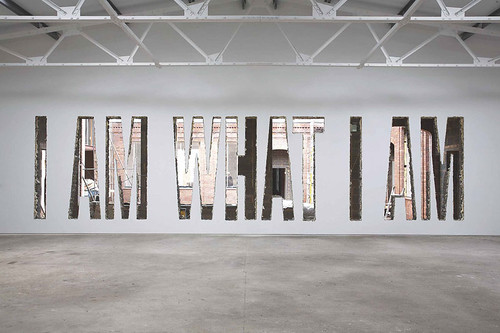 |
| Tercerunquinto. I Am What I Am |
I am made like that
When I have a desire to laugh
Yes, I laugh with a burst of laughter
I like the him who likes me
And it isn't my fault
If it isn't always the same him
That I love every time
I am what I am
What do you want more
What do you want of me
I am made to please
And I can't change a thing
My heels are too high
My waist too arched
My breasts much too hard
And my eyes too dark
And then what is more
What can that be to you
I am what I am
I please who I please
What can that be to you
What has happened to me
Yes I've loved someone
Yes someone has loved me
Like children love each other
Just know how to love
Love to love
Why ask me questions
I am there to please you
Tercerunquinto.
I Am What I Am
Installation view, Ikon Eastside 2008
Photo: Stuart Whipps
I Am What I Am
Installation view, Ikon Eastside 2008
Photo: Stuart Whipps







